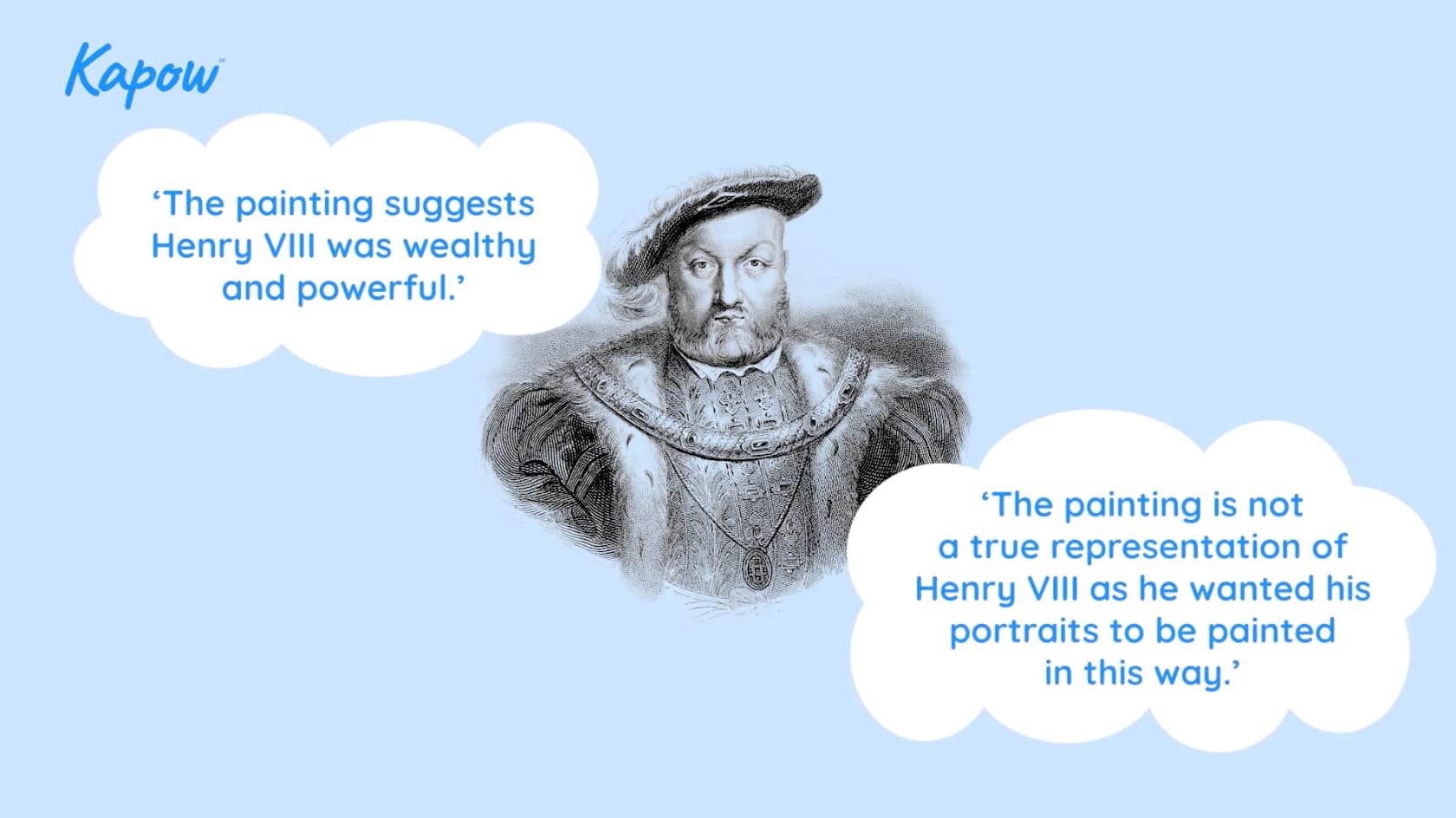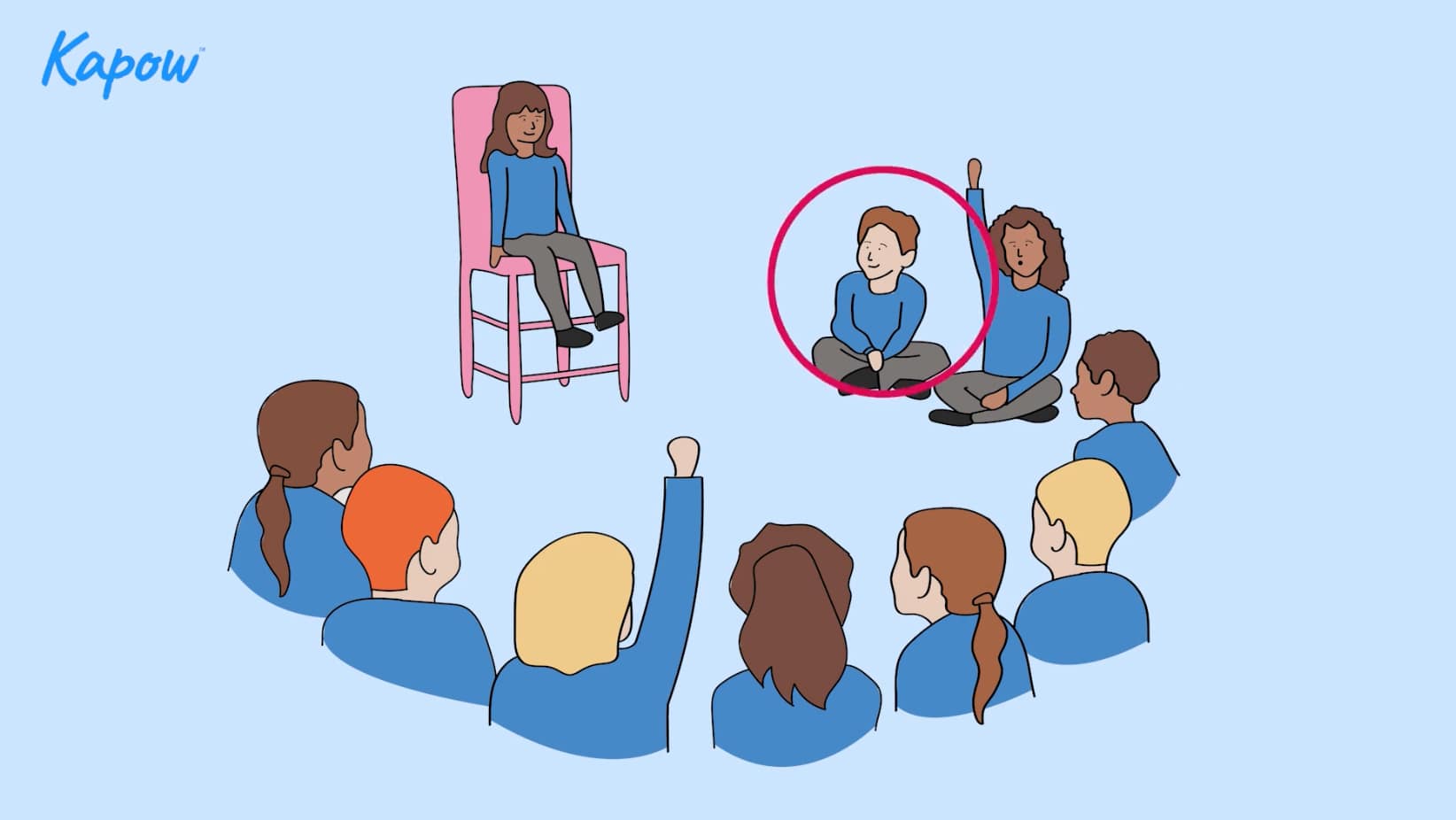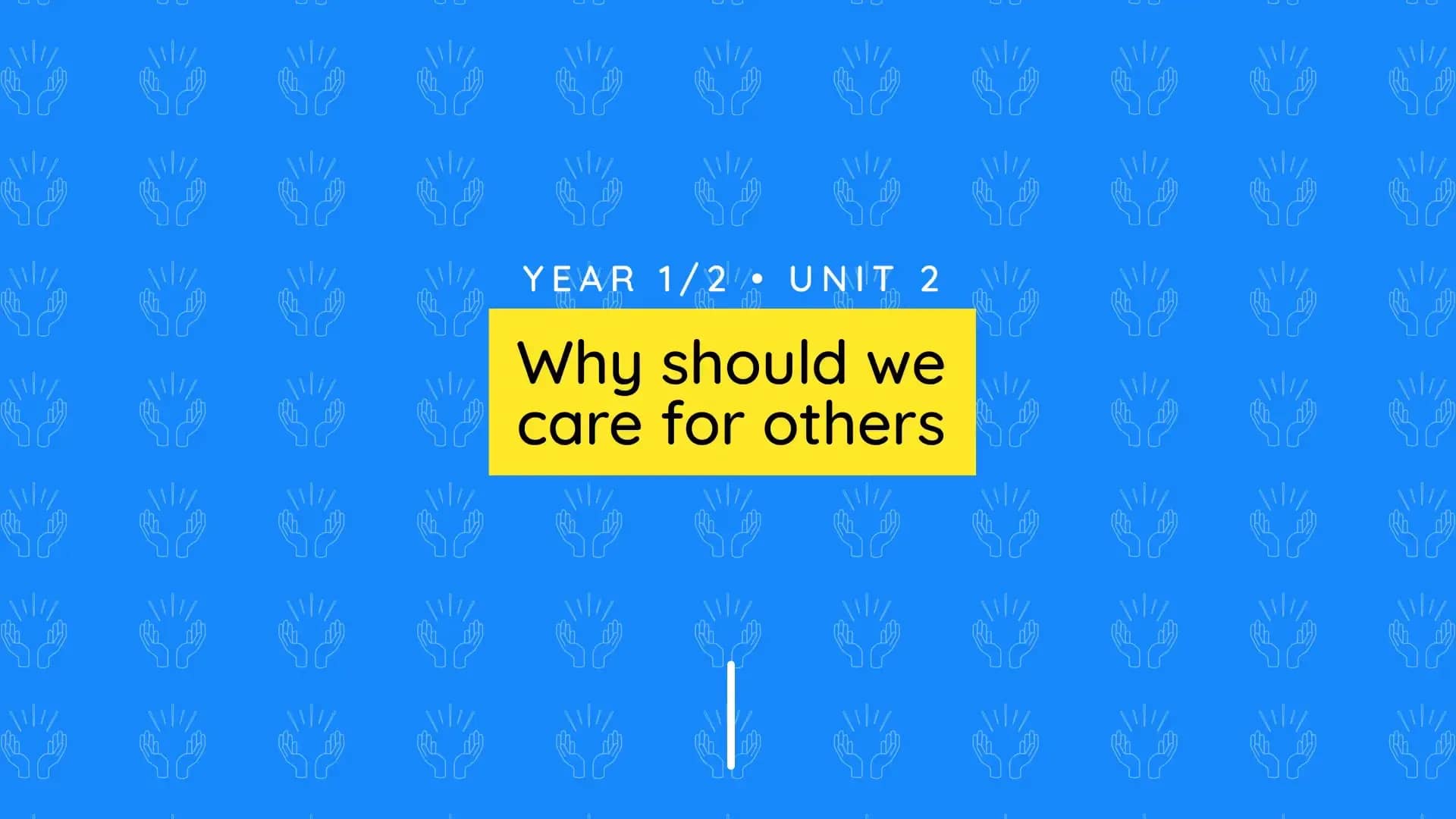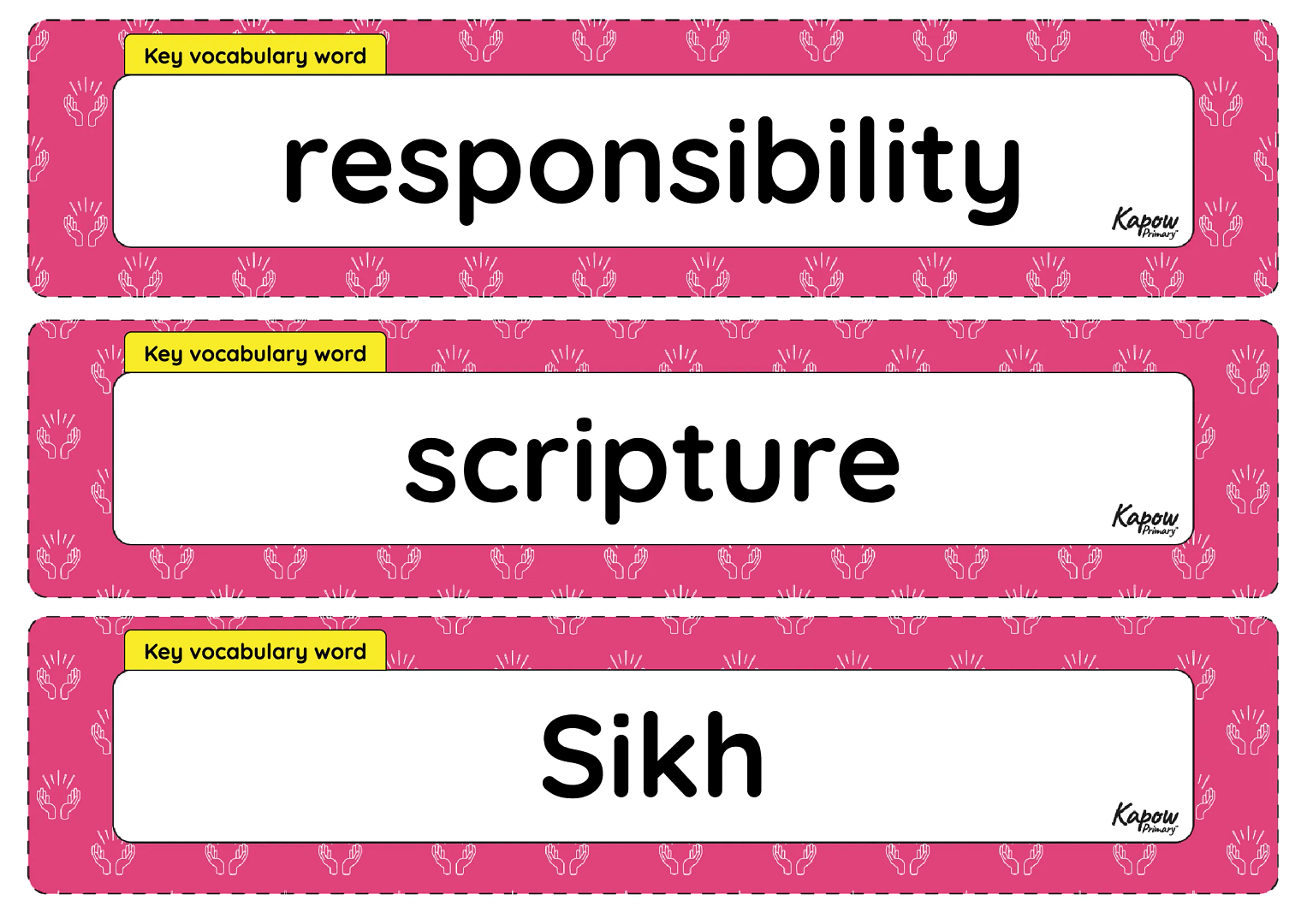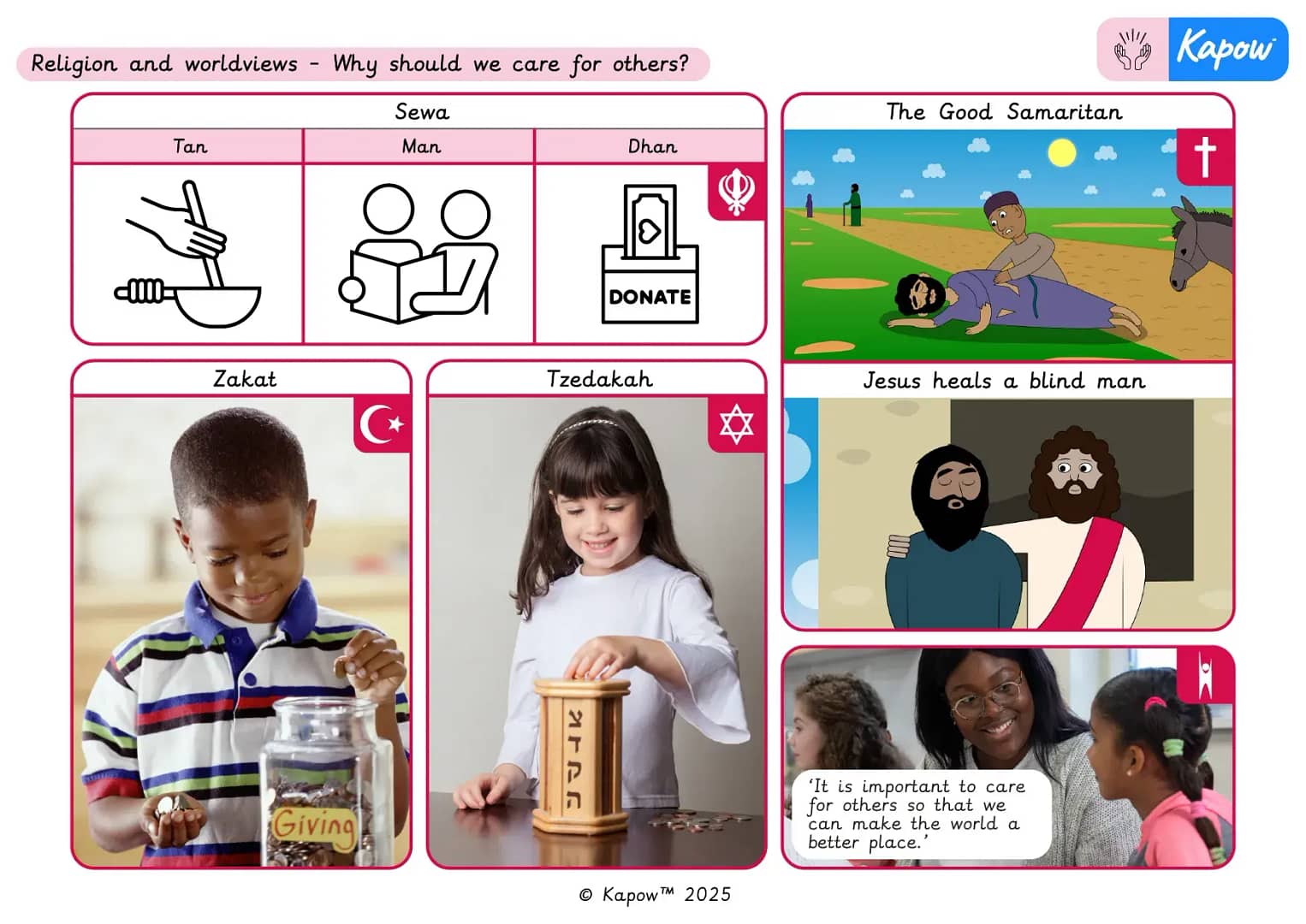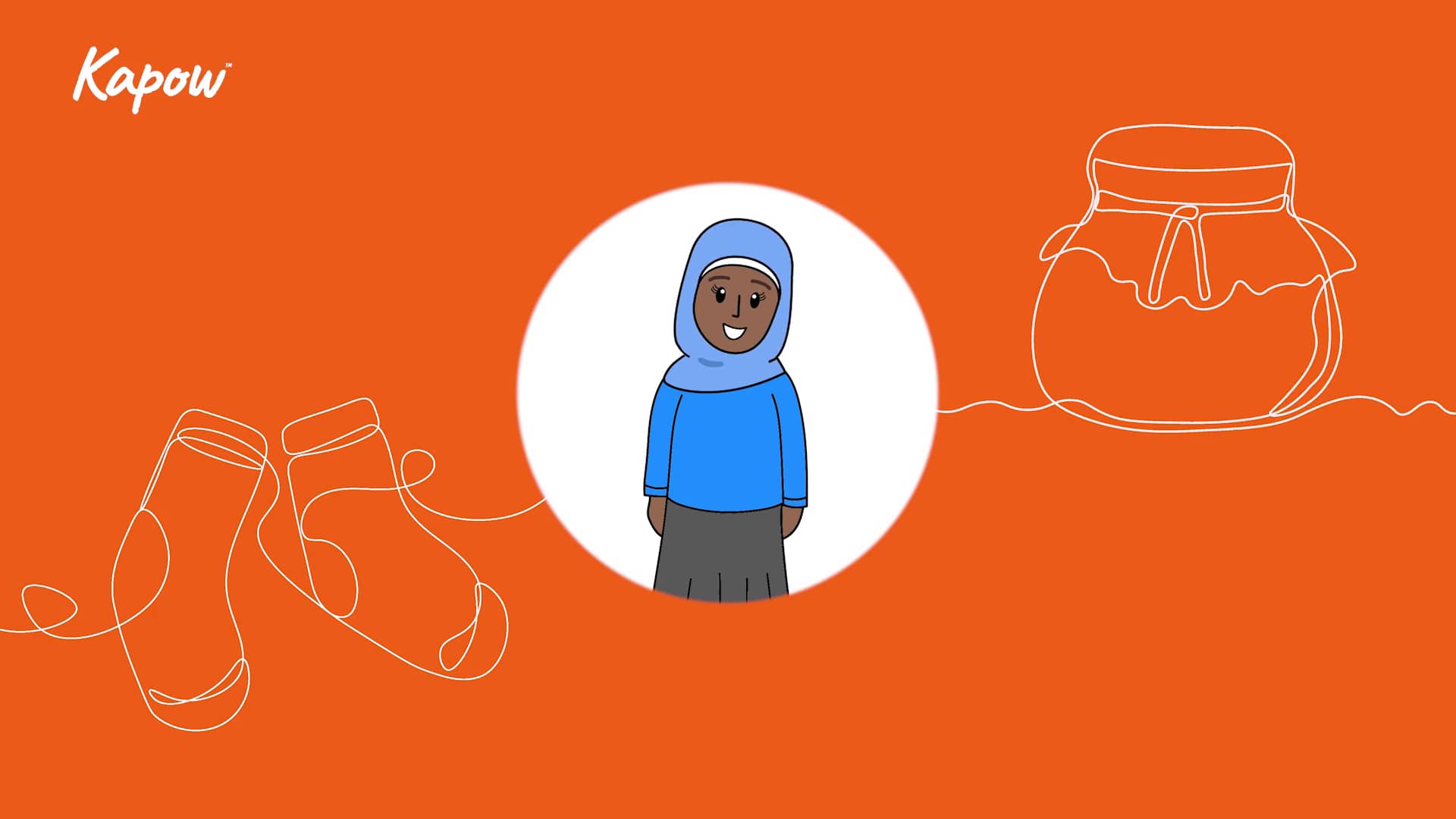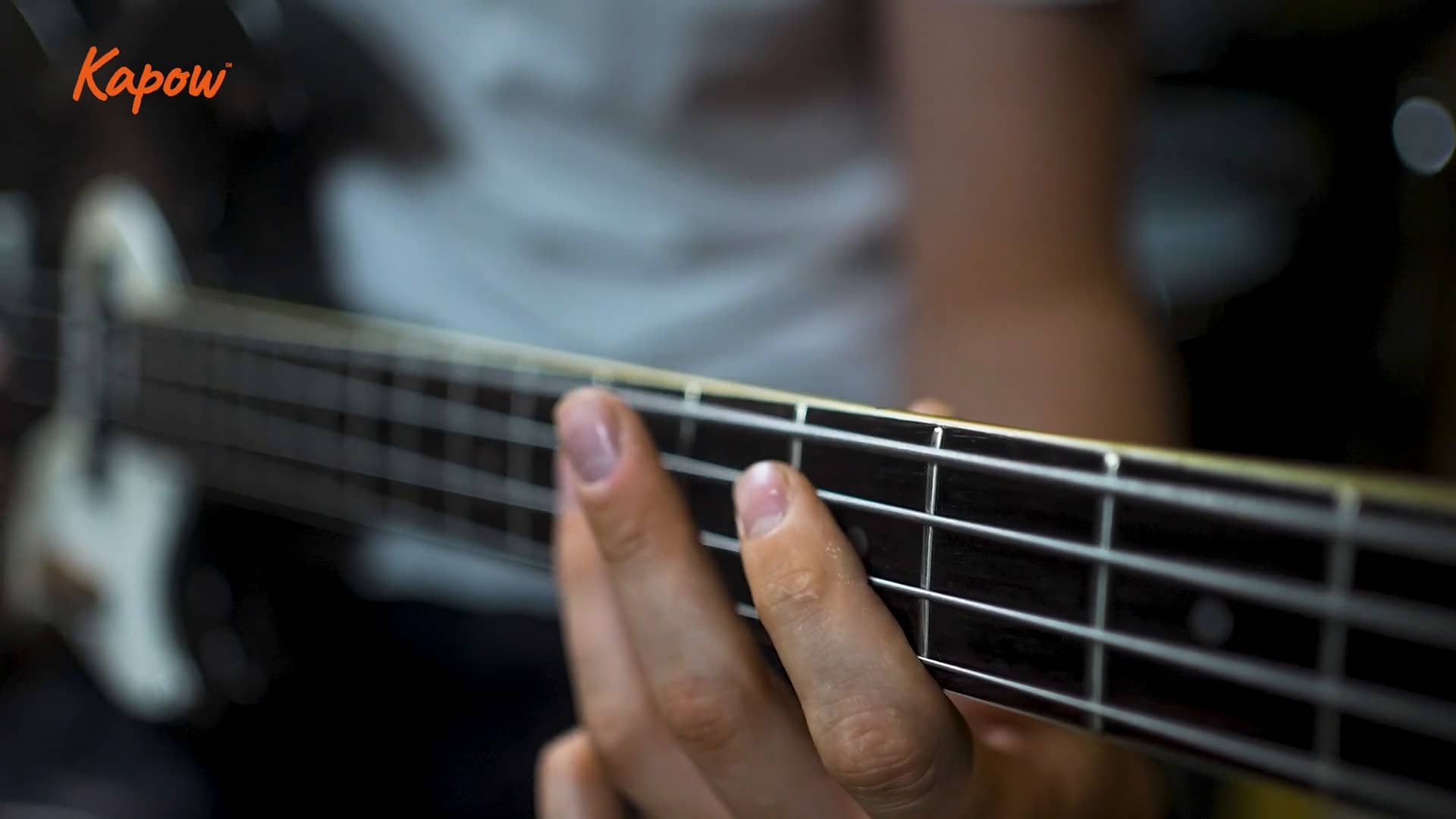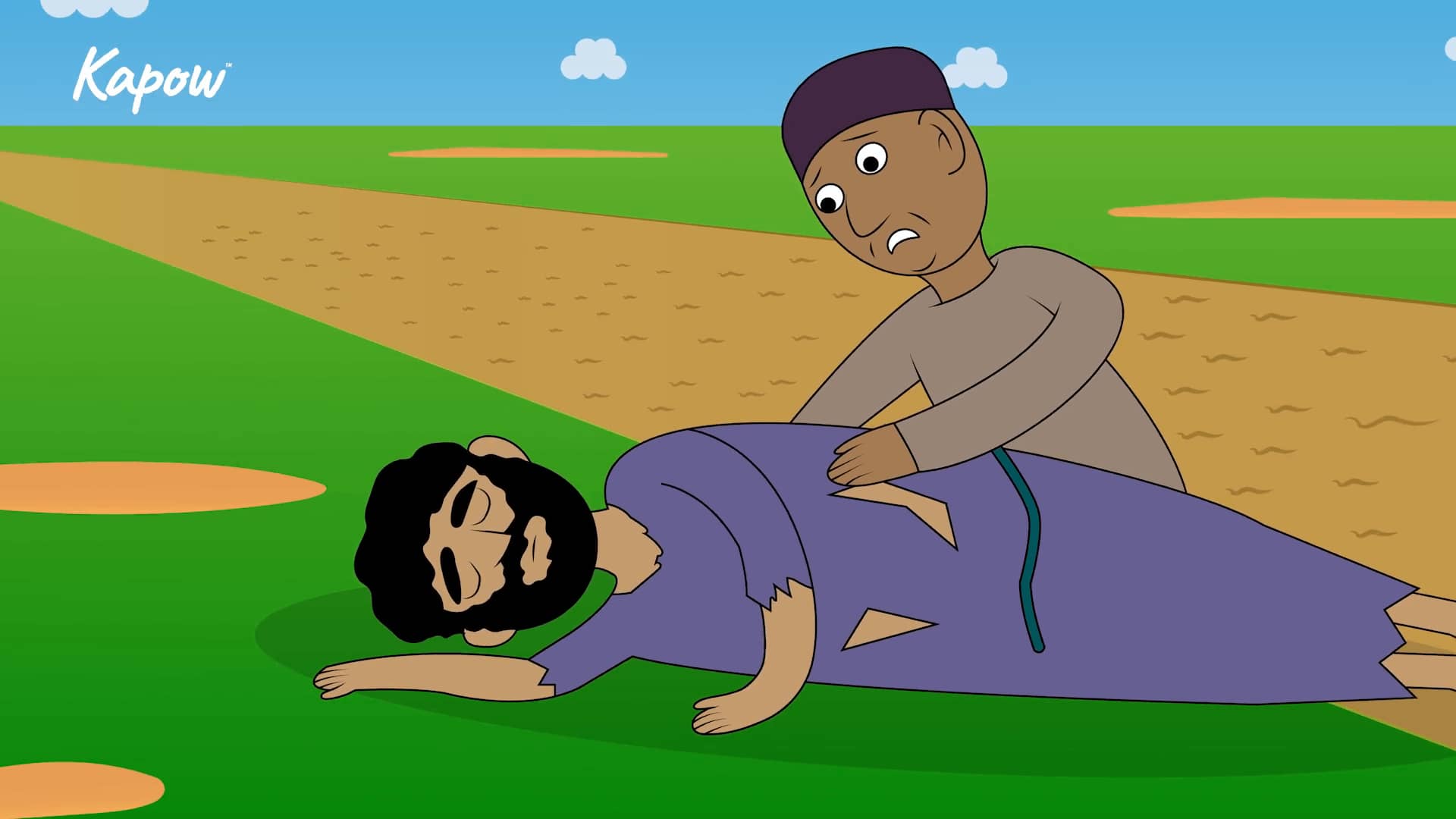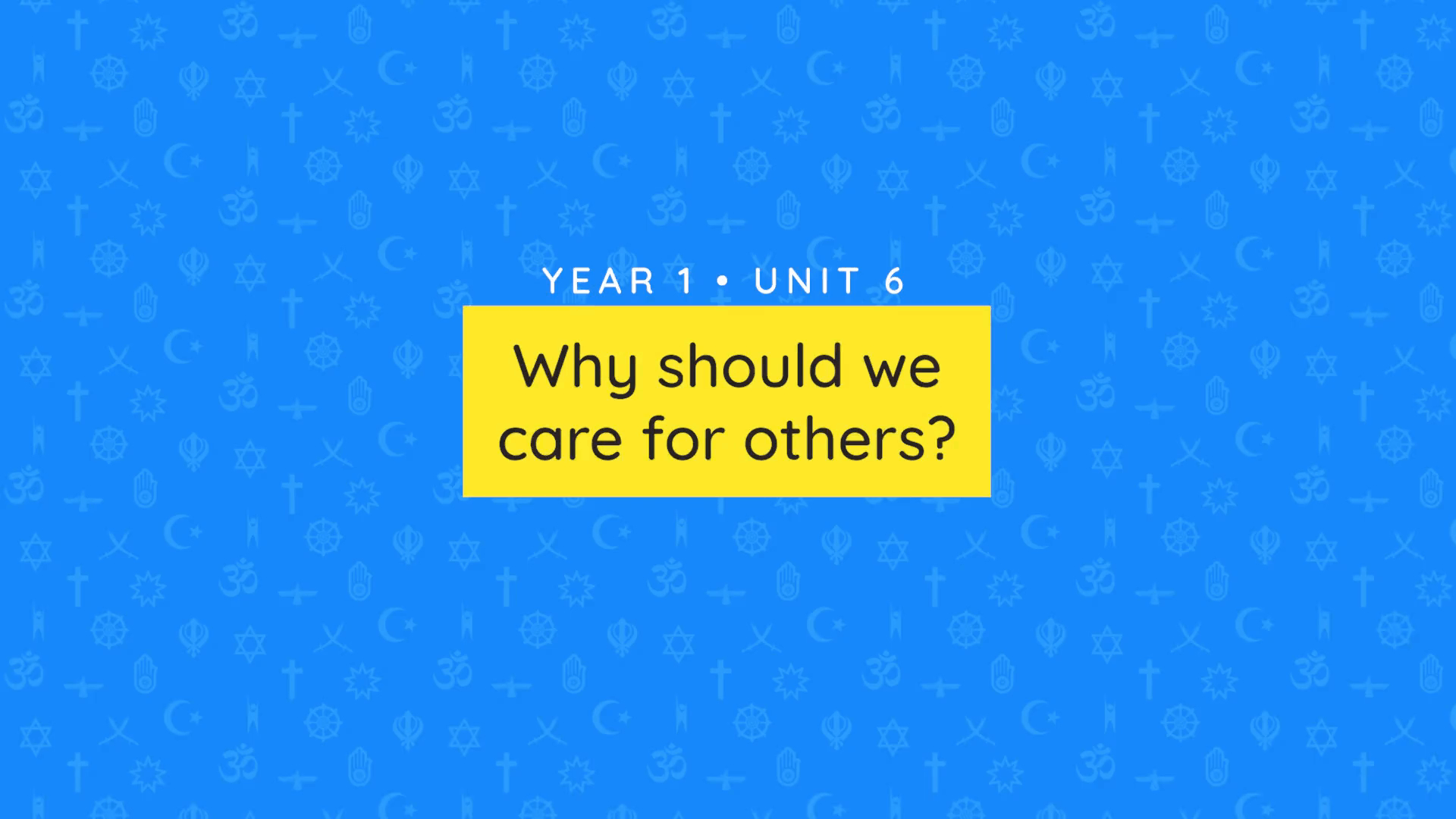A History video that helps teachers develop the children’s skills in using sources as evidence to investigate the past.
year: Year 1
Teacher video: Hot seating
A History video that helps teachers use hot seating to develop the children’s enquiry and empathy skills.
Unit overview: Why should we care for others? 1/2
Vocabulary display – R&W: Y1/2(B) Why should we care for others?
Knowledge organiser – R&W Y1/2 (B): Why should we care for others?
A Knowledge organiser that captures the essential knowledge and skills learnt throughout the mixed-age unit Religion and worldviews, Y1/2 (B), Why should we care for others?
This Religion and worldviews resource is designed to support children as they explore the concept of giving to others in the Christian, Sikh and Muslim worldviews.
It highlights key vocabulary and practices and is perfect for consolidating essential knowledge and fostering cross-cultural understanding.

